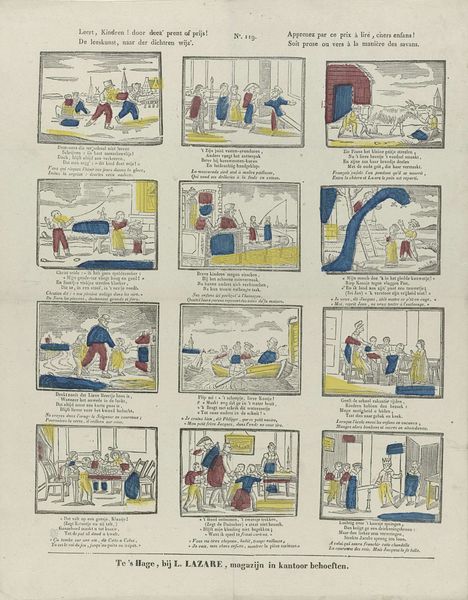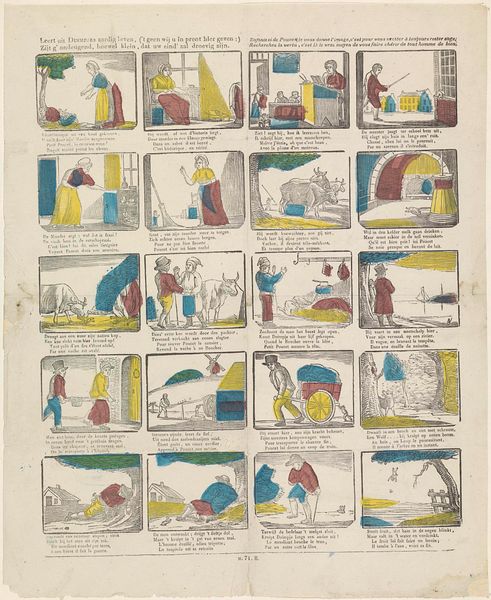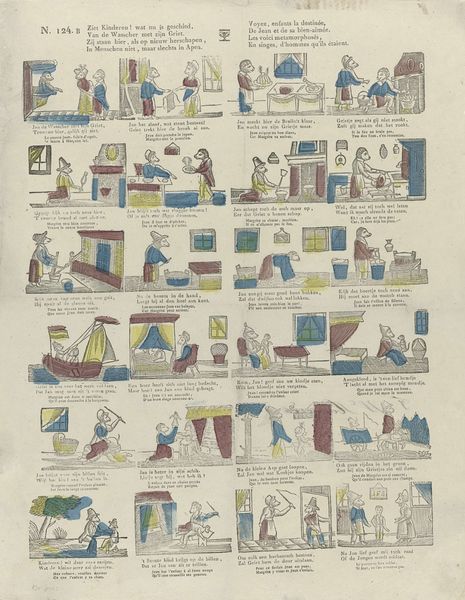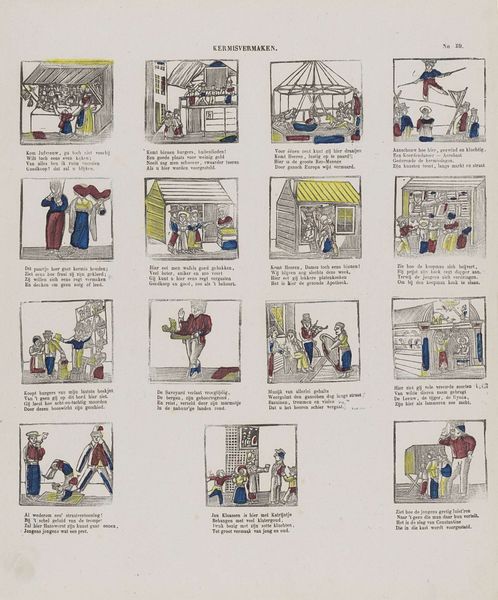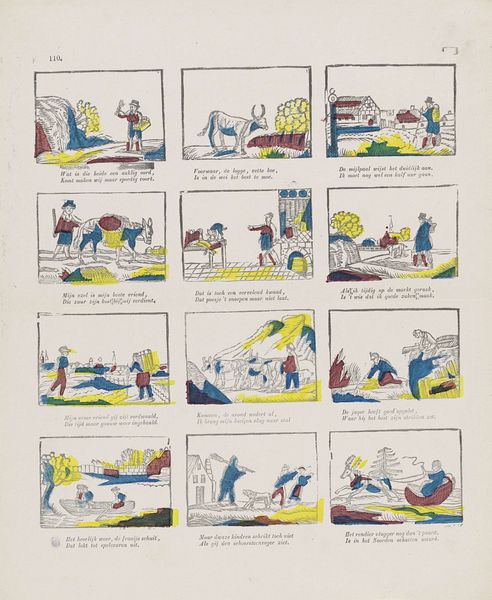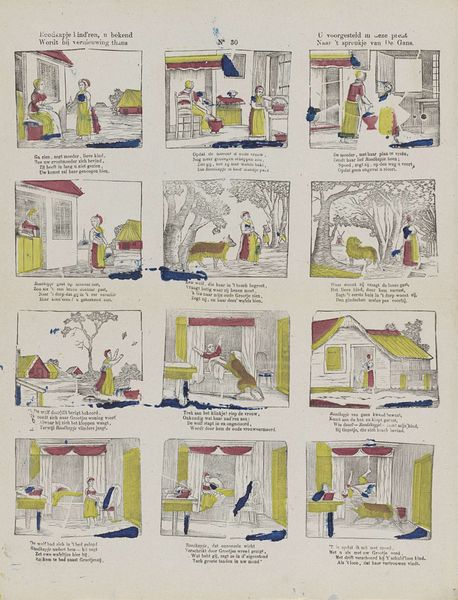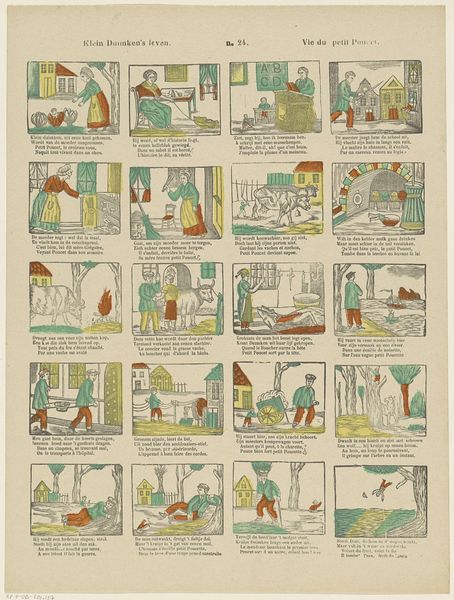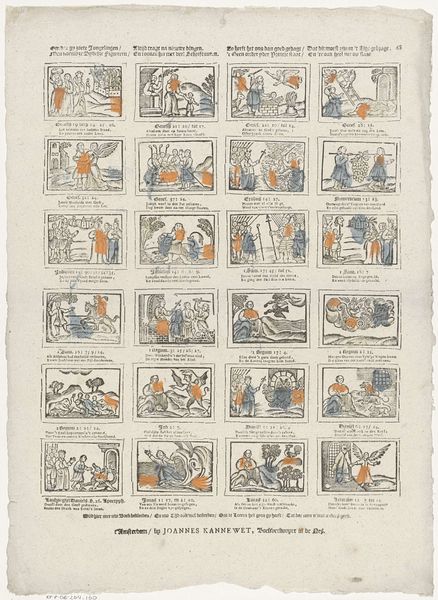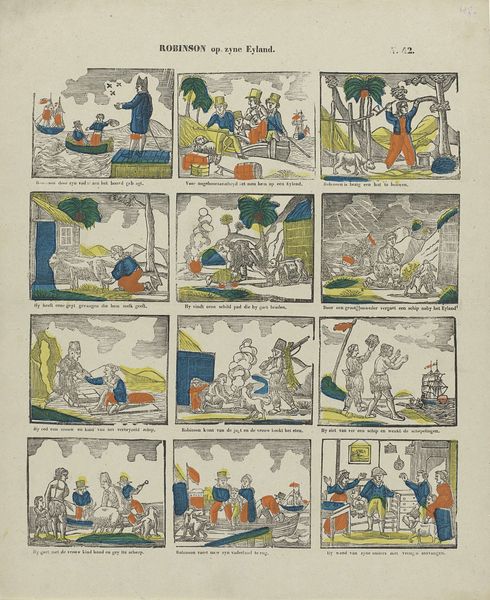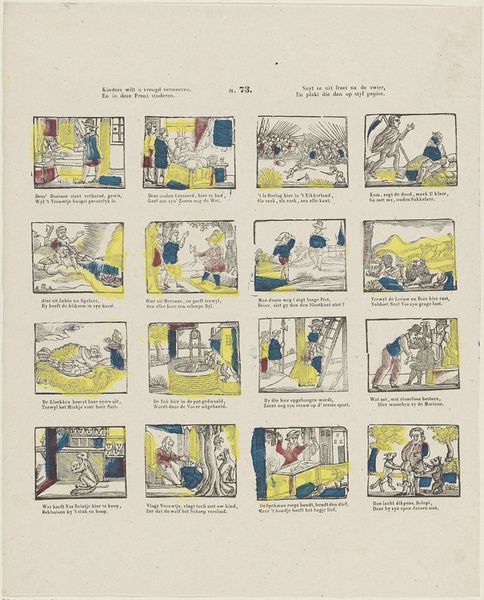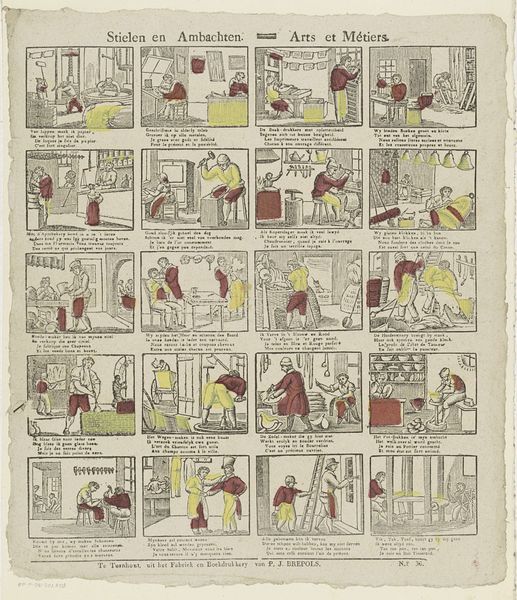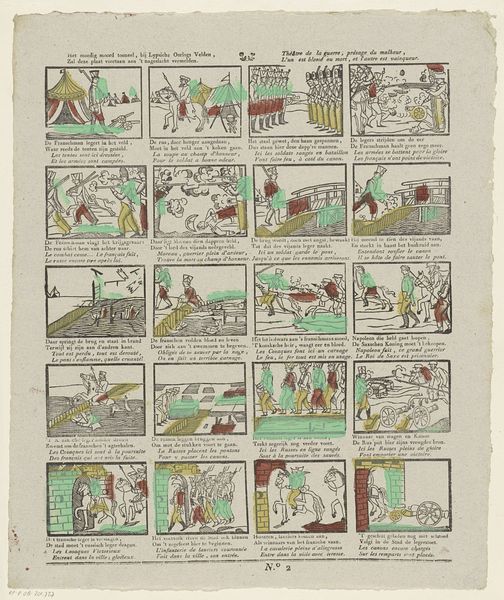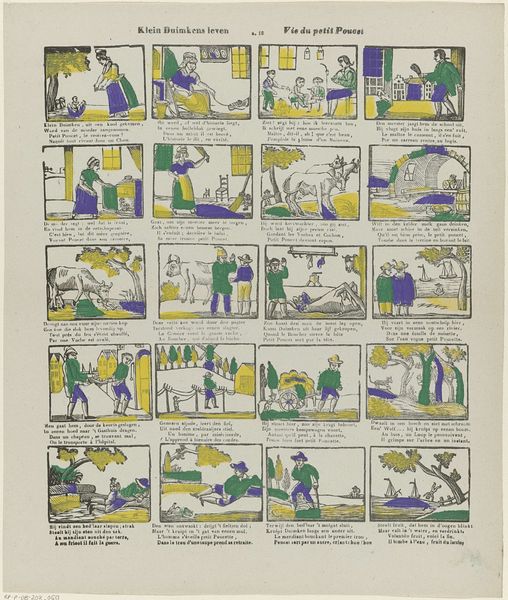
Het kinderspel, behaagt ons wel, / Maar bij het spelen, Voegt nooit krakeelen 1848 - 1881
0:00
0:00
lutkiecranenburg
Rijksmuseum
drawing, print, etching, paper, ink, pencil
#
drawing
#
comic strip sketch
#
quirky sketch
#
narrative-art
#
dutch-golden-age
# print
#
etching
#
sketch book
#
figuration
#
paper
#
personal sketchbook
#
ink
#
idea generation sketch
#
sketchwork
#
thumbnail sketching
#
folk-art
#
pencil
#
comic
#
sketchbook drawing
#
genre-painting
#
storyboard and sketchbook work
#
academic-art
#
sketchbook art
Dimensions: height 381 mm, width 300 mm
Copyright: Rijks Museum: Open Domain
Curator: This print, housed here at the Rijksmuseum, is titled "Het kinderspel, behaagt ons wel, / Maar bij het spelen, Voegt nooit krakeelen", dating back to somewhere between 1848 and 1881. It's attributed to Lutkie & Cranenburg. What are your initial impressions? Editor: My first thought is it reads as an early form of comic strip. The figures, although simple, have a dynamic quality. The muted colors give it a sense of aged nostalgia, almost like a cherished page from a storybook. Curator: It's a wonderful example of genre painting manifesting as folk art. The images and captions work together to tell a story about childhood pastimes and even offer moral commentary—hinting at how "child's play" should be joyful but free from quarrels. Consider the socio-political environment then; what role did the art play? Editor: From a formal standpoint, it presents a well-organized layout with its twelve rectangular panels. Each panel contains simple, gestural drawings, seemingly rendered in ink and pencil. Note how consistent the marks are throughout each image, creating a real sense of unity, but within that regularity I feel it verges on the mundane. Curator: Ah, but the supposed mundanity speaks to its social importance. By creating easily reproducible prints depicting daily life and playful activities, artists such as Lutkie & Cranenburg were engaging directly with contemporary society, effectively popularizing images for everyday people. It’s art for the masses, influencing perspectives on values and childhood. Editor: While I concede the socio-historical angle, it's the balance within each frame that draws my eye—the interplay of positive and negative space, for instance, adds to the sketchlike feel of the illustrations. This suggests, to me, that we're viewing the artistic process itself. Curator: I can respect your take. Through this single piece, we can look into the world of nineteenth-century Dutch life, seeing how childhood was being understood and portrayed, with those themes resonating today. Editor: Exactly. Whether it’s about narrative construction, its composition, or the artistic gestures, there's a lasting story to be decoded, a sort of invitation to play and analyze.
Comments
No comments
Be the first to comment and join the conversation on the ultimate creative platform.
